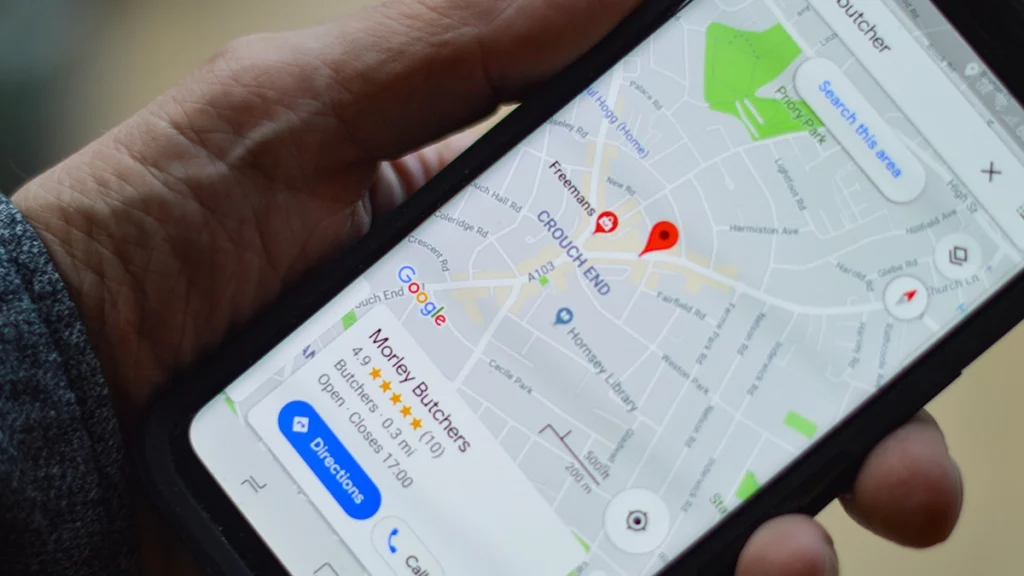Imagine winning more walk-in customers this week, simply by enhancing your online presence. Your Google Business Profile, previously known as Google My Business, can transform how local customers discover your business. It’s one of the simplest and most powerful tools for small business owners in the UK to seize this opportunity.
It helps you appear on Google Search, Google Maps, and in the local pack for people searching in your area. Despite how effective it is, many small-business owners still don’t take full advantage of what it offers.
This guide will walk you through everything you need to know to get set up, get visible, and keep your listing working for you. Imagine a potential customer choosing a competitor simply because they couldn’t find you online. Embrace this guide as your key to unlocking more visibility and stronger connections with your local audience.
What Google Business Profile Is and Why It Matters
Your Google Business Profile is your online shopfront. When someone searches for your business name or a service you offer, the profile shows essential information that customers use when making decisions. This includes:
- Opening hours
- Phone number
- Website link
- Reviews
- Photos
- Services
- Posts and updates
- Directions
For many customers, this profile is the first impression they get of your business. That means accuracy, clear messaging, and strong branding all play a part in whether someone chooses you or a competitor.
From an SEO point of view, your Google Business Profile is a huge asset. A well-optimised profile helps you show up in local search results, especially for searches with strong intent like “plumber near me,” “web designer Nottingham,” or “best coffee shop in Leeds.”
If local customers matter to you, this should be at the centre of your marketing.
What Google Business Profile Is and Why It Matters
Setting up your profile is straightforward when you follow the right steps. Here’s the full process.
1. Sign in to Google Business Profile
Go to: https://www.google.com/business/
Sign in using the Google account you want linked to your business. Make sure it’s an account you plan to keep using long-term.
2. Search for Your Business
Google may already have a listing for you, especially if you’ve been open for a while. Enter your business name and location to check.
- If it exists, claim it.
- If not, select Add your business to Google.
3. Add Your Basic Business Information
You’ll be asked for:
- Business name
- Business category (choose the closest match)
- Address (or service area if you visit customers)
- Phone number
- Website URL
Keep these details consistent with your website and social media channels. This consistency helps your SEO.
4. Choose Whether You Serve Customers at Your Address
If you have a physical shop, office, or studio, show your address.
If you travel to customers, choose “I deliver goods and services to my customers” instead of displaying a full address.
5. Verify Your Business
Verification proves to Google that your business is legitimate. Methods include:
- Postcard
- Phone
- Video verification
- Live video call
Most brick-and-mortar businesses receive a postcard with a code. Service-based businesses often get video verification instead.
6. Complete Your Business Profile
Once you gain access, fill in every section. The more detail you provide, the stronger your visibility will be.
Optimising Your Google Business Profile

Think of your profile as a living piece of content. The more time you put into optimising it, the more traffic and enquiries it will generate.
Here’s how to make it work at its best.
1. Add High-Quality Photos and Videos
Customers look at visuals before reading anything. Aim to upload:
- Exterior photos
- Interior photos
- Team photos
- Product shots
- Before-and-after examples
- Short videos
Images build trust. Google also favours active listings with regular updates.
2. Write a Clear and Helpful Business Description
Add a short paragraph that explains:
- Who you are
- What you do
- Who you help
- What makes you different
Avoid keyword stuffing. Keep it natural, friendly, and easy to understand.
3. Select the Right Categories
Your primary category has a big impact on what searches you appear for. Choose one that is closest to your actual service.
You can then add multiple secondary categories to expand your reach.
4. Add Services and Products
This helps customers understand what you offer at a glance.
For each service, include:
- Service name
- Short description
- Pricing (if relevant)
For product-based businesses, this is another opportunity to list items, highlight promotions, and improve visibility.
5. Keep Your Operating Hours Updated
Nothing frustrates customers more than incorrect opening hours.
Use the seasonal hours feature for:
- Bank holidays
- Christmas
- Special events
- Reduced winter/summer hours
Keeping this updated improves trust and makes customers more likely to choose you.
6. Use Google Posts
Posts are a brilliant way to keep your listing active. You can share:
- Announcements
- Offers
- Event details
- Blog posts
- Behind-the-scenes updates
Posts stay live for seven days, so a weekly update works well.
7. Enable Messaging
If you can manage incoming messages, turn this feature on. It gives potential customers an instant way to reach you and can increase conversions.
Managing Reviews Effectively

Reviews are one of the strongest trust signals for potential customers. They also influence your local search ranking. Your goal is to:
- Get more reviews
- Maintain a consistent flow of reviews
- Respond to every review
- Address concerns professionally
How to Ask for Reviews
You can:
- Send a follow-up email
- Include a link in your email signature
- Add a QR code in your shop or studio
- Ask customers in person after a positive experience
Make the process easy by sharing your unique review link.
Responding to Positive Reviews
Keep it simple and personal. Thank the customer and reinforce something specific they mentioned.
Responding to Negative Reviews
Approach these with calm and professionalism.
- Acknowledge their experience
- Offer a solution
- Move the conversation offline if needed
This shows potential customers that you care and handle issues maturely.
Why Reviews Help SEO
Google trusts businesses with consistent, quality reviews. More positive feedback increases your visibility in local searches.
Local SEO Tips to Strengthen Your Google Business Profile
Your Google Business Profile is part of your local SEO ecosystem. To get the most out of it, combine it with the right supporting actions.
1. Make Sure Your Website Is Optimised
Local SEO depends heavily on your website being:
- Fast
- Mobile-friendly
- Structured clearly
- Optimised for your local area
Include your town or city within your service pages and meta titles where appropriate.
2. Build Local Citations
Citations are mentions of your business details on other websites. Examples include:
- Yell
- Yelp
- Thomson Local
- TripAdvisor (if relevant)
Consistency matters. Match your business name, phone number, and address exactly.
3. Use Location-Focused Keywords
Create pages that target:
- “Web design Nottingham”
- “Plumbing services Leeds”
- “Accountant in Bristol”
These help Google understand where you operate.
4. Encourage Repeat Engagement
Google tracks actions like:
- Clicking for directions
- Calling your business
- Visiting your website
- Viewing photos
The more engagement your profile gets, the better your visibility.
5. Build Local Backlinks
Links from relevant UK websites help you rank higher. Look at:
- Local business directories
- Industry associations
- Sponsorships
- Local press
- Community events
Every link strengthens your local authority.
Common Mistakes to Avoid
Many small businesses unintentionally harm their visibility. Watch out for:
- Leaving sections blank
- Using low-quality photos
- Ignoring reviews
- Having inconsistent business information
- Neglecting posts
- Using a category that doesn’t match your services
These hold your profile back and make it harder for customers to trust you.
A Quick Summary of What to Focus On
If you want an easy checklist, here it is:
- Claim and verify your profile
- Complete every section
- Add high-quality photos
- Update your hours and details
- Use posts weekly
- Ask for and respond to reviews
- Keep your website strong
- Build local citations and backlinks
Follow these steps and your Google Business Profile will start working for you, not against you.
Final Thoughts
For many small businesses, a well-optimised Google Business Profile delivers results faster than SEO, social media, or paid ads. It’s free, simple to use, and incredibly effective. If you’re looking for a practical way to boost visibility in the UK and reach more local customers, this should be one of your first investments.
If you want help setting up or optimising your Google Business Profile, you can reach out through our website. Strong local visibility starts with the foundations, and this is one of the easiest wins you can take advantage of today.


